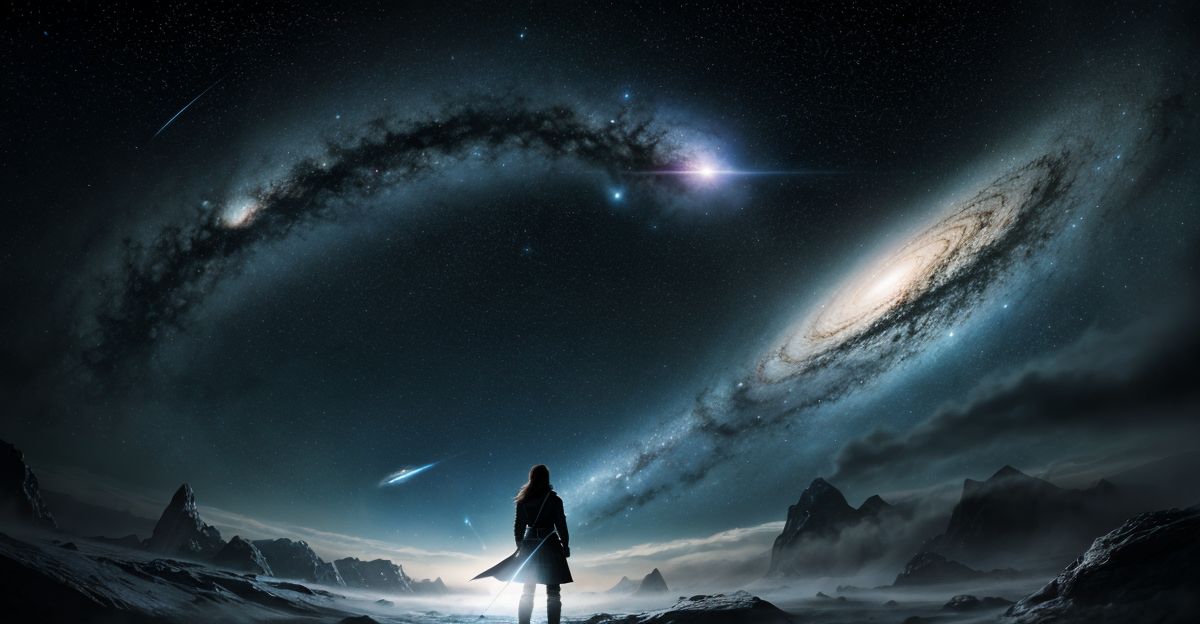
Rogue black holes wander the galaxy, posing a remote but real threat. Learn how they form, the subtl
Alright, cosmic comrades, Quill here, ready to drop some mind-blowing knowledge that might just keep you up at night. But hey, a little healthy dose of cosmic perspective never hurt anyone, right? Today’s topic: rogue black holes. Forget those galaxy-center behemoths; these are the *unchained wanderers*, the cosmic nomads, the… well, let’s just say they’re not tied down. **What Makes a Black Hole Rogue? The Unchained Wanderers** So, what *exactly* defines a rogue black hole? Simply put, it’s a black hole that isn’t gravitationally bound to the supermassive black hole residing at the heart of a galaxy. Picture it as a cosmic rebel, breaking free from its galactic family for a solo adventure across the interstellar highways. How do these renegades come to be? Several theories exist. One involves *supernova kicks*. When a massive star collapses to form a black hole, the resulting supernova explosion can sometimes be uneven, delivering a powerful “kick” to the newborn black hole, potentially ejecting it from its galactic home. Another scenario involves *galactic collisions*. When galaxies collide (a surprisingly common event in the universe), the resulting gravitational chaos can hurl black holes into intergalactic space. Finally, *ejection events* – smaller-scale interactions within galaxies – can also give a black hole the boot. **The Subtle Signs: How to Detect the Invisible Destroyer** Okay, so these things are out there, roaming the cosmos. But how can we possibly *see* something that, by its very nature, doesn’t emit light? That’s where the detective work begins. We have to rely on indirect methods, piecing together clues like cosmic Sherlock Holmeses. One crucial clue is *gravitational lensing*. Black holes possess such immense gravity that they can bend and distort light from objects behind them. Imagine looking through a funhouse mirror, but instead of silly faces, you see stretched and warped galaxies. Astronomers search for these distortions as a telltale sign that a massive object, potentially a rogue black hole, is lurking in the foreground. You can explore gravitational lensing further on resources like NASA’s website. Another sign is *accretion flares*. While rogue black holes aren’t typically actively consuming stars, they can still interact with interstellar gas and dust. As this material spirals into the black hole, it heats up and emits brief, intense bursts of light known as accretion flares. Telescopes can detect these flares, offering a glimpse of the invisible wanderer. Finally, we can look for *unusual stellar motions*. If we observe a star seemingly orbiting nothing, it could be orbiting a rogue black hole! The star’s peculiar movement would be a clear indication that something massive, yet unseen, is exerting a gravitational pull. **Size Matters: The Potential Impact on Our Solar System** Now for the part that might make you a little uneasy. How big are these rogue black holes, and what could happen if one wandered a little too close to home? Rogue black holes vary in size. *Stellar mass* black holes are typically a few times the mass of our Sun. *Intermediate mass* black holes are larger, but still smaller than the supermassive giants at the centers of galaxies. A close encounter with a rogue black hole, even a relatively small one, could have devastating consequences for our solar system. The gravitational force could *disrupt planetary orbits*, potentially sending planets colliding with each other or ejecting them from the solar system entirely. Think of it as a cosmic game of billiards, with planets as the balls and a rogue black hole as the cue ball. The (thankfully extremely unlikely) scenario of *direct capture* is even more terrifying. Imagine Earth being captured by a rogue black hole. We wouldn’t be instantly sucked in, as depicted in the movies. Instead, we’d enter a decaying orbit, slowly spiraling towards our inevitable doom. It would be a long, slow, and incredibly unpleasant end. But seriously, the chances of this happening are astronomically small. (Pun absolutely intended!) **The Search is On: Current Research and Future Prospects** So, what are scientists doing to address this potential threat? They’re actively searching for rogue black holes using a variety of methods. Telescopes, such as the Hubble Space Telescope, are used to search for gravitational lensing and accretion flares. Gravitational wave observatories, like LIGO, can detect the ripples in spacetime caused by the merging of black holes, which could help us pinpoint the location of rogue black holes. The future of rogue black hole detection looks even brighter. New telescopes, like the James Webb Space Telescope, will possess the power to see further and more clearly than ever before. With more precise mapping and detection capabilities, who knows what we might discover? Even *you* can contribute to the search! Citizen science projects allow amateur astronomers to analyze data and help identify potential rogue black holes. It’s a fantastic way to get involved in real scientific research and perhaps even make an amazing discovery. So, while the chances of a rogue black hole disrupting our solar system are incredibly slim, it’s always wise to be informed, right? Plus, contemplating these cosmic wanderers provides a new appreciation for the sheer scale and strangeness of the universe. What are your thoughts? Does the idea of rogue black holes terrify you, fascinate you, or perhaps a bit of both? And hey, if you happen to spot a peculiar distortion in the night sky, let me know! You might just be the one to discover the next cosmic wanderer. Follow for more mind-blowing facts and weird science!



